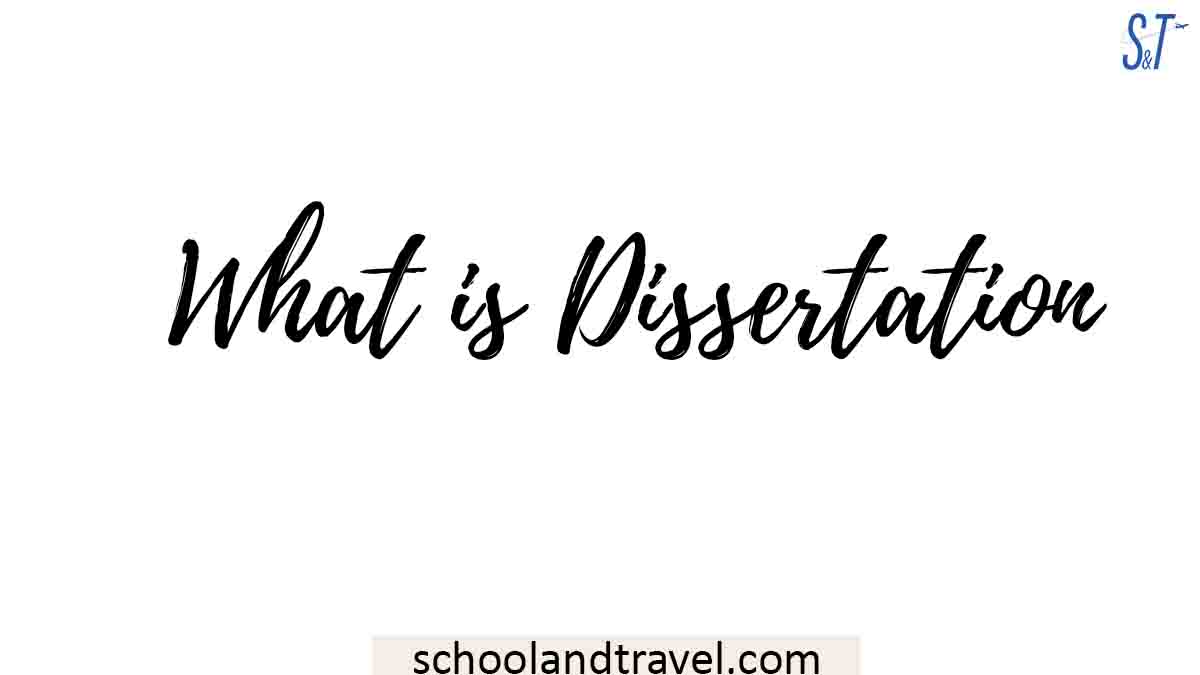A dissertation is a substantial work of writing of ten to twenty thousand words on a topic chosen by the student or one assigned by the department.
It is usually organized into chapters and may include headers and subheadings, which are occasionally (but not always) numbered in the same manner as a report.
Dissertations address a specific research subject and may be empirical or bibliographical in nature.
However, while the dissertation’s objective is to answer the issue, the process is more significant than the outcome.
Even if you produce no usable data whatsoever, you can still get a first in your dissertation – as long as you can prove what you have learned about the research process and can analyze it to your reader’s understanding.
Skills for a good dissertation
Notwithstanding the type of dissertation you are writing on and the nature of the topic chosen, you’ll need to display the following skills in your dissertation.
They include:
- Defining and outlining a study topic by posing a clear question.
- Identifying current concerns that are relevant to your research topic.
- Obtaining the necessary data for your study topic.
- Examining the accuracy of the facts you’ve gathered.
- Taking a look at the evidence you gathered and evaluating it
- Getting at a well-thought-out conclusion
- Putting together and presenting the results of your investigation.
Structuring a dissertation
Although a dissertation is a long writing based on academic research, certain criteria should be followed to bring about a good dissertation. These criteria include the following:
Planning your dissertation:
Like every form of writing that deals with a specific topic, a dissertation has three main parts:
i. Introduction – describes what the dissertation is about, defines your approach to the topic, explains terms related to your dissertation topic, and describes theoretical background if you are doing original research.
ii. Main body – discusses your topic in detail and shows evidence and different points of view that express your argument clearer and more logical terms.
iii. Conclusion – summarizes your argument, which is also based on the research topic.
While structuring your dissertation, it is worth noting that every dissertation can be planned in these ways: planning for length and content.
Read this: Is a DBA degree worth it? (Quick answer)
Planning for length:
A dissertation is usually lengthy. Every dissertation writer should have a certain range of words he/she wants to write while researching a topic.
However, this is also incorporated in the introduction, body as well as conclusion of the research topic.
A standard beginning should be at least 600 words long, but it might be as long as 1000-1200 words depending on your topic and approach, and a conclusion should be at least 300 words long.
Planning for content:
While planning for the contents of a research topic of a dissertation, a chronological order of arrangement is usually followed. It includes:
Title page:
This is the first page of your document containing your dissertation’s title, name, department, institution, degree program, and submission date. It may also include your student number, your supervisor’s name, and the university’s logo.
Acknowledgement:
The acknowledgment section is usually optional. It is the space given for you to thank everyone who helped you write your dissertation. This might include participants in your research, your supervisors, and friends or family who supported you.
Abstract:
The abstract, typically 150 to 300 words long, is a brief description of your dissertation. It would help if you wrote it last after you’ve finished the remainder of the dissertation. In the abstract, make sure to include the following:
- The key focus and goals of your research
- The methods you utilized to conduct your research
- A summary of the main findings
- Your final thoughts
It would help if you got it right because it is the first (and sometimes only) section of your dissertation that others will read.
Table of contents:
The table of contents includes a list of chapters, subheadings and their page numbers. The contents page summarizes the document’s structure and enables the reader to explore it.
The table of contents should include all sections of your dissertation, including appendices, challenges encountered, and conclusions.
Read this: Most Useless Degrees you won’t even believe
Introduction:
In the introduction, you write your dissertation’s topic, establish the purpose of your research topic and its relevance, and tell the reader what to expect in the rest of the dissertation. The introduction should contain:
- Your study topic, as well as the background information you’ll need to start your research.
- Your research project’s focus and scope
- The current condition of your study and its significance
- Your research aims and questions
- An summary of the framework of your dissertation
Always make the introduction to be clear, engaging, and relevant to your research. Thus, the reader will comprehend the what, why, and how of your research at the end.
Conclusion
The conclusion should briefly answer the main research question, leaving the reader with a clear understanding of your opinions concerning your research topic.
Appendix challenges encountered and recommendations should be included in the conclusion.
Awesome one; I hope this article answered your question.
Share this Information.
Related articles:
- How to Create a Balanced Plate: The Key to Healthy Eating
- How to Start a Virtual Book Club with Friends
- The Top Credit Score Hacks Every Young Adult Should Know
- The Pros and Cons of Rental Property as a Passive Income Stream
- Enhancing Your Clinical Psychologist Job Prospects with Professional Help
- The Impact of Graphic Design School on Your Future Earnings Potential
- 7+ College Scholarships for Muslim Students (FAQs)
- Flavor of the Month Scholarship 2024 (Requirements, FAQs)
- Vegetarian Scholarship (Requirement, Deadline, FAQs) | 2025
- John and Abigail Adams Scholarship 2022-2024 (Eligibility, Deadline)




